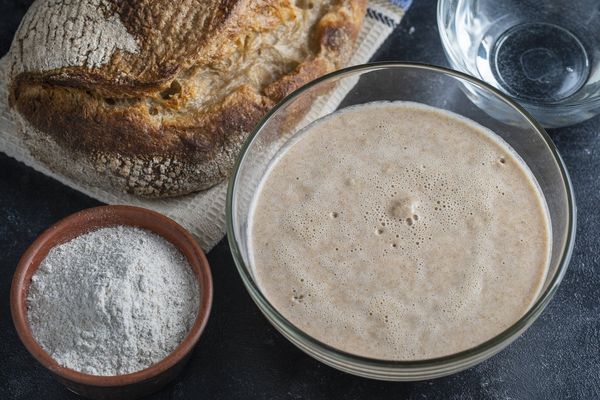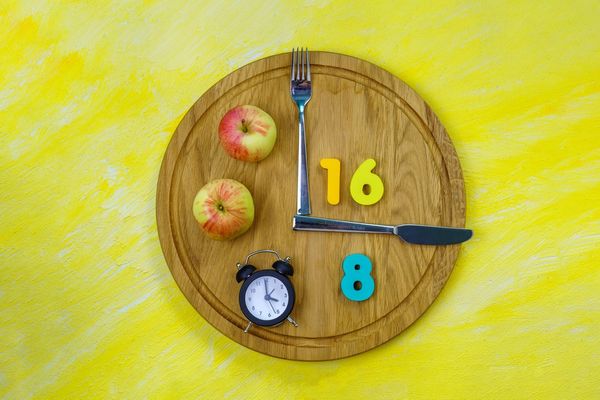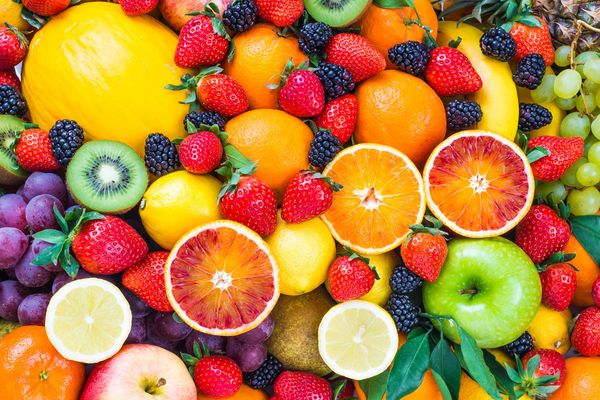Q:
How much fiber should I have in my daily diet, and what are the five best sources?
A:
Nutritionists and health professionals frequently extol the virtues of a high-fiber diet and bemoan the fact that Americans get so little fiber. But, how much should we get, why should we get it, and how can we get it without tripling the time we spend in the kitchen or taking a handful of pills?
The good news is that getting adequate fiber can be a good-tasting trip down the fresh food aisles of any supermarket. Fiber is a plant carbohydrate and is found in breads and cereals, fruits and vegetables, peas and beans and nuts. The less processed the food, the more fiber it is likely to have, hence whole-grain breads and cereals will have more fiber than highly processed varieties, and whole fruits will have more fiber than juices (unless the juice is fortified with fiber).
Fiber has almost no calories because it passes through the body virtually undigested, but it packs a powerhouse of health benefits. Insoluble fiber—the type found in whole-wheat flour, wheat bran, nuts and vegetables—can reduce the incidence and severity of constipation by softening the stool and increasing the speed at which waste products move through the digestive tract. This can help prevent hemorrhoids and diverticulosis (a condition in which pockets form in the walls of the colon). Soluble fiber—found in peas, beans, oats, apples and citrus foods—forms a gel in the intestine, trapping cholesterol and removing it in the stool. Both types of fiber can add bulk to the diet, making dieters feel fuller and helping them lose weight.
When it comes to fiber, in general more is better. The National Academy of Sciences recommends adults under age 50 get 25 to 38 grams and those over age 51 get 21 to 30 grams. One way to calculate your fiber needs is to look at your calorie intake. You should have at least 14 grams of fiber for every 1,000 calories you eat. So if you eat about 2,000 calories a day, you would need about 28 grams of fiber.
Is there a "top five"? There are really many fiber-packed foods, and it's best to eat a variety because different foods come packaged with different sets of nutrients. For example, you'll get B vitamins from cereal products and vitamins A and C from a variety of fruits and vegetables.
That said, the best fiber sources in the diet are generally high-fiber cereals and beans. Some cereals have about 12 grams of fiber per serving, but check the nutrition labels because some cereals have very little fiber. Split peas, lentils, and many kinds of beans contain 10 to 16 grams of fiber per one-cup serving. Whole-grain breads and pastas, as well as other whole grains such as barley, have about 6 grams per serving. Among fruits, raspberries pack a whopping 8 grams per serving. For fiber-rich vegetables, consider artichokes with 10 grams per medium choke, peas with 8 grams per serving and broccoli with 5 grams.
You'll be well on your way to getting your daily fiber boost if you add vegetables to casseroles and soups and beans to salads and wraps and choose fruits and nuts as snacks. To avoid gas and abdominal distress, increase your fiber intake gradually and drink plenty of fluids.
- Signs You're Not Getting Enough Fiber ›
- 5 Steps to a Heart-Healthy Diet ›
- Easy Ways to Eat More Fiber ›
- How Fiber Can Reduce Your Risk for Colorectal Cancer - HealthyWomen ›
- Fiber: Something You're Probably Not Getting Enough of in Your Diet - HealthyWomen ›
- En qué forma la fibra puede reducir tu riesgo de cáncer colorrectal - HealthyWomen ›







